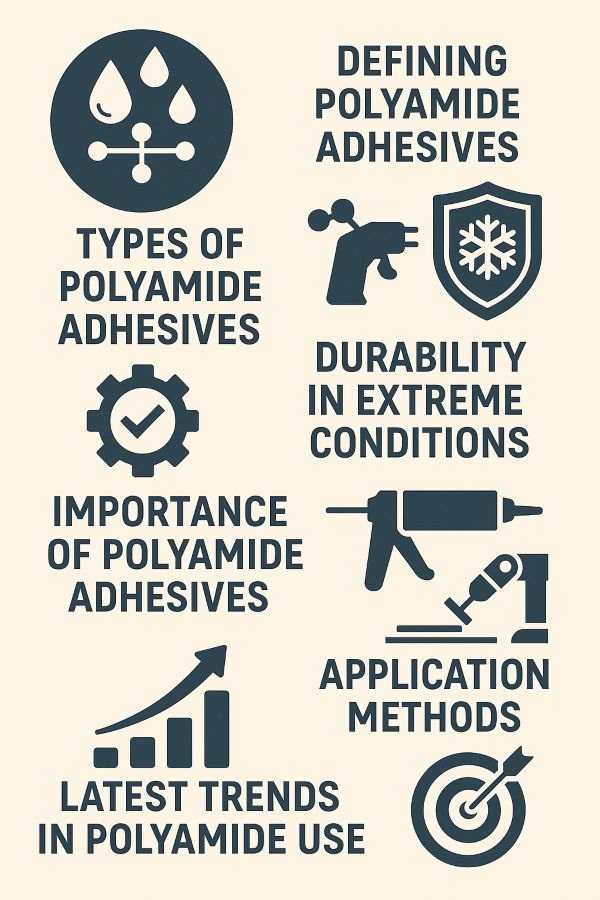
Eco-friendly Adhesion Defined
Types of Solvent-free Hot-melts
Importance of Eco-friendly Adhesives
Methods of Application
Latest Trends in Adhesion
Strategies for Implementation
Future of Solvent-free Solutions
Frequently Asked Questions (FAQ)
Eco-friendly adhesion is reshaping manufacturing by reducing environmental impact through safer, solvent-free bonding solutions. These adhesives eliminate volatile organic compounds (VOCs), offering strong, efficient bonds while promoting cleaner production practices. Increasingly adopted across industries, solvent-free hot melts provide a sustainable alternative without compromising adhesive performance, making them a key component of modern, responsible manufacturing.
Solvent-free hot-melt adhesives come in various formulations, each tailored to specific industrial needs. Bio-based types are designed for applications where sustainability is prioritized, offering reduced carbon footprints. High-heat-resistant variants are ideal for packaging or assembly lines exposed to elevated temperatures. Rapid-curing options provide precision and efficiency for electronics and other detailed applications. These diverse types allow industries to meet performance standards while adhering to environmentally conscious practices.
Eco-friendly adhesives play a critical role in advancing sustainable industrial practices. By eliminating VOCs and minimizing emissions, these adhesives help manufacturers reduce their ecological impact while maintaining efficiency and safety. Whether applied in packaging, electronics, textiles, or construction, solvent-free hot-melts offer a cleaner alternative that supports regulatory compliance, workplace safety, and long-term environmental goals.
Solvent-free hot-melt adhesives can be applied using several industry-standard techniques. Extrusion is commonly used for packaging applications, offering controlled flow and consistent bonding. Roll coating provides uniform coverage for larger surfaces and is ideal for high-heat-resistant adhesives. Spray systems are suitable for fast-curing formulations, especially in precise or delicate work like electronics. Choosing the appropriate application method ensures optimal performance and reduces material waste, supporting both productivity and environmental responsibility.
The adhesive sector is evolving rapidly, with sustainability at the forefront. The latest trends focus on the development of solvent-free hot-melt adhesives that meet stringent environmental standards while delivering industrial-grade performance. Advances include bio-based ingredients, heat resistance, fast curing, and broader material compatibility. These innovations enable manufacturers to meet customer demands for greener products without sacrificing durability or efficiency.
Implementing solvent-free adhesive solutions requires strategic planning. Start by assessing specific bonding requirements—such as heat resistance, curing time, and substrate compatibility. Select adhesives that align with those needs and invest in appropriate application systems like extrusion, roll coating, or spray systems. Training staff on handling and applying these adhesives is essential to ensure consistent quality. Integrating these eco-friendly options not only meets sustainability targets but also enhances operational performance.
The future of solvent-free adhesives is bright, as industries continue to transition toward more sustainable processes. Innovations will likely focus on improving performance characteristics while further minimizing environmental impact. These adhesives are expected to see wider adoption in packaging, automotive, electronics, and textile sectors. As regulations become stricter and consumer demand for sustainable products grows, solvent-free hot-melts will be central to environmentally responsible manufacturing.
What are eco-friendly adhesives?
Eco-friendly adhesives are bonding solutions designed to reduce environmental harm, often free of VOCs and hazardous solvents.
What are solvent-free hot-melt adhesives?
These are adhesives that melt and solidify without using solvents, eliminating VOC emissions and improving workplace safety.
What types of solvent-free adhesives are available?
Available types include bio-based formulations, heat-resistant grades, and fast-curing variants for electronics and precision work.
How do eco-friendly adhesives benefit manufacturers?
They reduce environmental impact, improve air quality, enhance safety, and support compliance with green regulations.
What methods are used to apply these adhesives?
Common application methods include extrusion, roll coating, and spray systems, selected based on project scale and requirements.
What trends are influencing adhesive technology?
The push toward sustainability is driving the development of high-performance, solvent-free adhesives with enhanced safety and efficiency.
How can companies adopt solvent-free adhesive solutions?
By selecting suitable products, updating equipment, training staff, and aligning adhesives with specific application needs.
What is the long-term outlook for eco-friendly adhesives?
Continued innovation is expected, leading to stronger, more versatile, and even more sustainable adhesive technologies across industries.